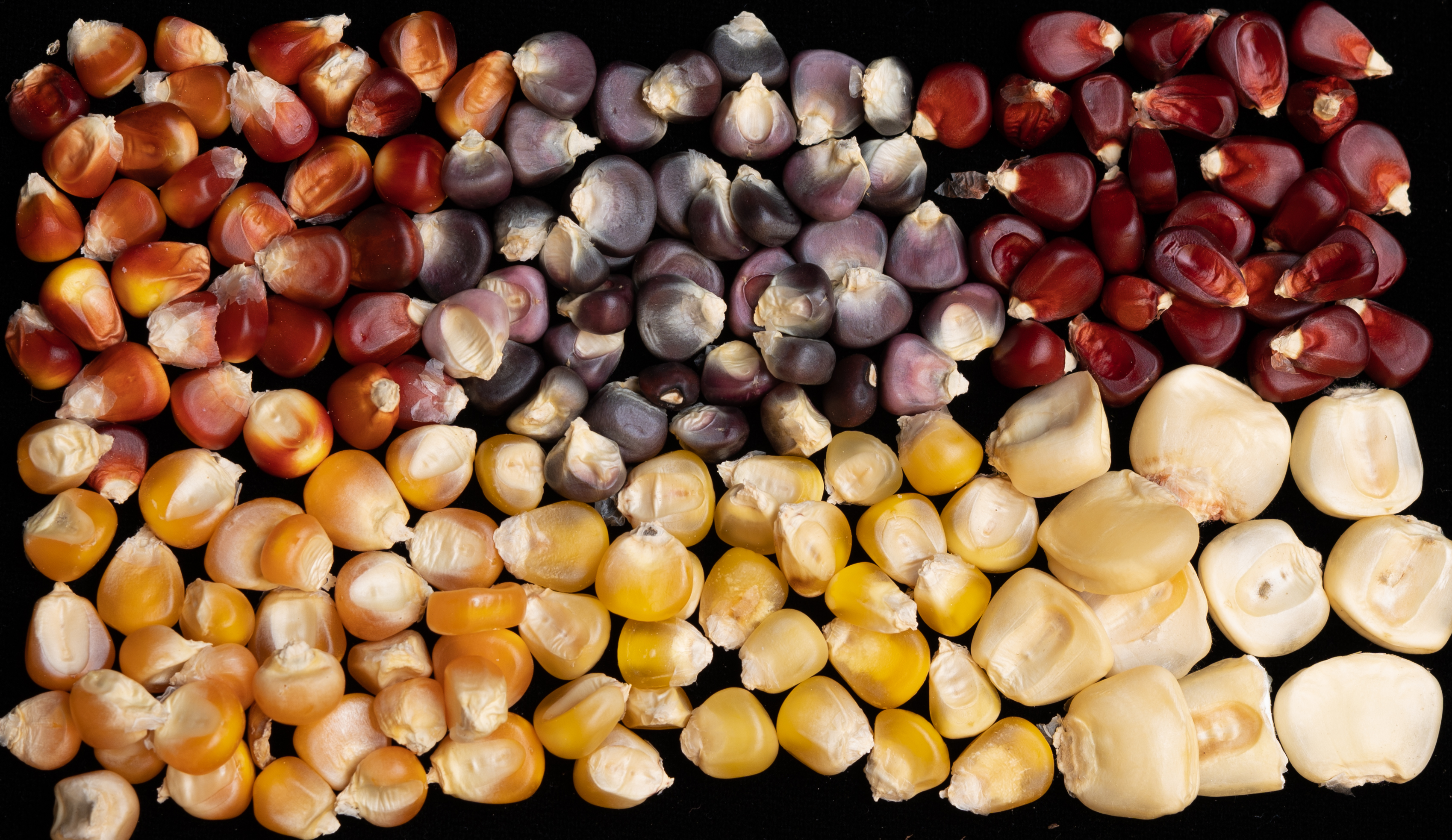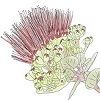5.3: Fruits
- Page ID
- 59258
\( \newcommand{\vecs}[1]{\overset { \scriptstyle \rightharpoonup} {\mathbf{#1}} } \)
\( \newcommand{\vecd}[1]{\overset{-\!-\!\rightharpoonup}{\vphantom{a}\smash {#1}}} \)
\( \newcommand{\id}{\mathrm{id}}\) \( \newcommand{\Span}{\mathrm{span}}\)
( \newcommand{\kernel}{\mathrm{null}\,}\) \( \newcommand{\range}{\mathrm{range}\,}\)
\( \newcommand{\RealPart}{\mathrm{Re}}\) \( \newcommand{\ImaginaryPart}{\mathrm{Im}}\)
\( \newcommand{\Argument}{\mathrm{Arg}}\) \( \newcommand{\norm}[1]{\| #1 \|}\)
\( \newcommand{\inner}[2]{\langle #1, #2 \rangle}\)
\( \newcommand{\Span}{\mathrm{span}}\)
\( \newcommand{\id}{\mathrm{id}}\)
\( \newcommand{\Span}{\mathrm{span}}\)
\( \newcommand{\kernel}{\mathrm{null}\,}\)
\( \newcommand{\range}{\mathrm{range}\,}\)
\( \newcommand{\RealPart}{\mathrm{Re}}\)
\( \newcommand{\ImaginaryPart}{\mathrm{Im}}\)
\( \newcommand{\Argument}{\mathrm{Arg}}\)
\( \newcommand{\norm}[1]{\| #1 \|}\)
\( \newcommand{\inner}[2]{\langle #1, #2 \rangle}\)
\( \newcommand{\Span}{\mathrm{span}}\) \( \newcommand{\AA}{\unicode[.8,0]{x212B}}\)
\( \newcommand{\vectorA}[1]{\vec{#1}} % arrow\)
\( \newcommand{\vectorAt}[1]{\vec{\text{#1}}} % arrow\)
\( \newcommand{\vectorB}[1]{\overset { \scriptstyle \rightharpoonup} {\mathbf{#1}} } \)
\( \newcommand{\vectorC}[1]{\textbf{#1}} \)
\( \newcommand{\vectorD}[1]{\overrightarrow{#1}} \)
\( \newcommand{\vectorDt}[1]{\overrightarrow{\text{#1}}} \)
\( \newcommand{\vectE}[1]{\overset{-\!-\!\rightharpoonup}{\vphantom{a}\smash{\mathbf {#1}}}} \)
\( \newcommand{\vecs}[1]{\overset { \scriptstyle \rightharpoonup} {\mathbf{#1}} } \)
\( \newcommand{\vecd}[1]{\overset{-\!-\!\rightharpoonup}{\vphantom{a}\smash {#1}}} \)
\(\newcommand{\avec}{\mathbf a}\) \(\newcommand{\bvec}{\mathbf b}\) \(\newcommand{\cvec}{\mathbf c}\) \(\newcommand{\dvec}{\mathbf d}\) \(\newcommand{\dtil}{\widetilde{\mathbf d}}\) \(\newcommand{\evec}{\mathbf e}\) \(\newcommand{\fvec}{\mathbf f}\) \(\newcommand{\nvec}{\mathbf n}\) \(\newcommand{\pvec}{\mathbf p}\) \(\newcommand{\qvec}{\mathbf q}\) \(\newcommand{\svec}{\mathbf s}\) \(\newcommand{\tvec}{\mathbf t}\) \(\newcommand{\uvec}{\mathbf u}\) \(\newcommand{\vvec}{\mathbf v}\) \(\newcommand{\wvec}{\mathbf w}\) \(\newcommand{\xvec}{\mathbf x}\) \(\newcommand{\yvec}{\mathbf y}\) \(\newcommand{\zvec}{\mathbf z}\) \(\newcommand{\rvec}{\mathbf r}\) \(\newcommand{\mvec}{\mathbf m}\) \(\newcommand{\zerovec}{\mathbf 0}\) \(\newcommand{\onevec}{\mathbf 1}\) \(\newcommand{\real}{\mathbb R}\) \(\newcommand{\twovec}[2]{\left[\begin{array}{r}#1 \\ #2 \end{array}\right]}\) \(\newcommand{\ctwovec}[2]{\left[\begin{array}{c}#1 \\ #2 \end{array}\right]}\) \(\newcommand{\threevec}[3]{\left[\begin{array}{r}#1 \\ #2 \\ #3 \end{array}\right]}\) \(\newcommand{\cthreevec}[3]{\left[\begin{array}{c}#1 \\ #2 \\ #3 \end{array}\right]}\) \(\newcommand{\fourvec}[4]{\left[\begin{array}{r}#1 \\ #2 \\ #3 \\ #4 \end{array}\right]}\) \(\newcommand{\cfourvec}[4]{\left[\begin{array}{c}#1 \\ #2 \\ #3 \\ #4 \end{array}\right]}\) \(\newcommand{\fivevec}[5]{\left[\begin{array}{r}#1 \\ #2 \\ #3 \\ #4 \\ #5 \\ \end{array}\right]}\) \(\newcommand{\cfivevec}[5]{\left[\begin{array}{c}#1 \\ #2 \\ #3 \\ #4 \\ #5 \\ \end{array}\right]}\) \(\newcommand{\mattwo}[4]{\left[\begin{array}{rr}#1 \amp #2 \\ #3 \amp #4 \\ \end{array}\right]}\) \(\newcommand{\laspan}[1]{\text{Span}\{#1\}}\) \(\newcommand{\bcal}{\cal B}\) \(\newcommand{\ccal}{\cal C}\) \(\newcommand{\scal}{\cal S}\) \(\newcommand{\wcal}{\cal W}\) \(\newcommand{\ecal}{\cal E}\) \(\newcommand{\coords}[2]{\left\{#1\right\}_{#2}}\) \(\newcommand{\gray}[1]{\color{gray}{#1}}\) \(\newcommand{\lgray}[1]{\color{lightgray}{#1}}\) \(\newcommand{\rank}{\operatorname{rank}}\) \(\newcommand{\row}{\text{Row}}\) \(\newcommand{\col}{\text{Col}}\) \(\renewcommand{\row}{\text{Row}}\) \(\newcommand{\nul}{\text{Nul}}\) \(\newcommand{\var}{\text{Var}}\) \(\newcommand{\corr}{\text{corr}}\) \(\newcommand{\len}[1]{\left|#1\right|}\) \(\newcommand{\bbar}{\overline{\bvec}}\) \(\newcommand{\bhat}{\widehat{\bvec}}\) \(\newcommand{\bperp}{\bvec^\perp}\) \(\newcommand{\xhat}{\widehat{\xvec}}\) \(\newcommand{\vhat}{\widehat{\vvec}}\) \(\newcommand{\uhat}{\widehat{\uvec}}\) \(\newcommand{\what}{\widehat{\wvec}}\) \(\newcommand{\Sighat}{\widehat{\Sigma}}\) \(\newcommand{\lt}{<}\) \(\newcommand{\gt}{>}\) \(\newcommand{\amp}{&}\) \(\definecolor{fillinmathshade}{gray}{0.9}\)A fruit is the swollen ovary of the flower, the last step in the process of sexual reproduction of flowering plants. After seeds are formed through fertilization, the tissue around those seeds starts to grow, forming the fruit. Fruits help the plant to disperse the seeds, through different mechanisms that depend on the type of fruit. Fruits can be either dry or fleshy fruits. Animals who eat fruits will often disperse the seeds to other areas. Some dry fruits can attach themselves to the feathers and fur of animals and “catch a ride” to another area where they can grow without competition. Other fruits resemble wings and will fly with the wind. Here we will review only some of the types of fruits.
Fleshy Fruits
Berries
In Botany, berries are defined as a fleshy fruit where the two innermost tissues are fleshy (endocarp and mesocarp) and they usually contain lots of seeds inside (Figure \(\PageIndex{1}\)). The endocarp is the tissue that is directly in contact with the seeds (endo = inside), while the mesocarp (meso = middle) is the tissue found in between the endocarp, and the external fruit tissue, the exocarp (exo = outside). This definition might be very confusing because, in the English language, we use the term “berry” to describe fruits that don’t necessarily comply with this botanical definition. For example, strawberry fruits are not considered berries in a botanical sense because their fruits and seeds are located on the outside of the edible red fleshy part (Figure \(\PageIndex{1}\)).
If we follow the botanical definition, then lilikoʻi (passion fruit), tomato and bananas are berries (Figure \(\PageIndex{1}\)). The banana varieties you see in the supermarket have been heavily domesticated by humans and no longer produce seeds. The brown specks you see inside a banana are unfertilized ovules. Wild bananas still produce seeds because their flowers get pollinated. Orange lilikoʻi (Passiflora laurifolia), native to Brazil, is an invasive species in Hawaiʻi. Its berries contain lots of pulp and seeds inside. This species is not as tart as yellow lilikoʻi or passionfruit (Passiflora edulis var. flavicarpa), and it is not cultivated commercially.
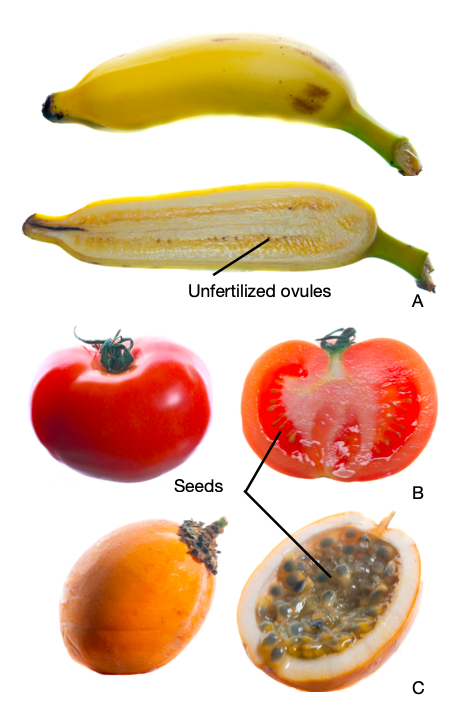
Drupes
Drupes are fleshy fruits where the endocarp forms a hard enclosure (pit) that surrounds the seed (Figure \(\PageIndex{2}\)). Drupes usually have a single seed. Examples of drupes include mangoes, peaches, nectarines, and apricots.

Hesperidium
The hesperidium is a modified berry where the endocarp is separated into segments, and the mesocarp is a thick and leathery whitish tissue, that we usually call a rind. This includes many citrus varieties, like the cara cara orange below (Figure \(\PageIndex{3}\)).
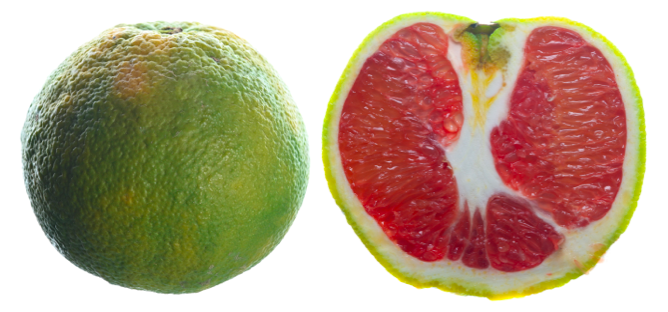
Pepo
Squashes, watermelons, and cucumbers are all examples of pepos. Pepos are modified berries with a hard rim (exocarp). Just like berries, they have fleshy endo and mesocarp and contain lots of seeds inside (Figure \(\PageIndex{4}\)).
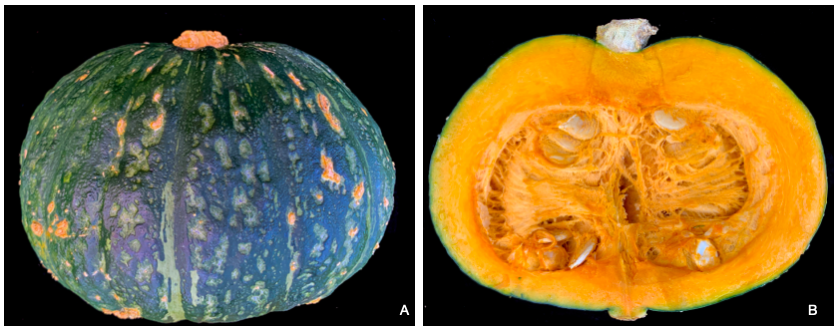
Multiple fruits
Multiple fruits are formed as the result of fused ovaries of nearby flowers. Each “eye” in a noni fruit (Morinda citrifolia; Figure \(\PageIndex{5}\)) is the scar where each flower used to be located. After pollination, they fall off the fruit. Examples of multiple fruits include noni, pineapple, mulberry, and breadfruit.
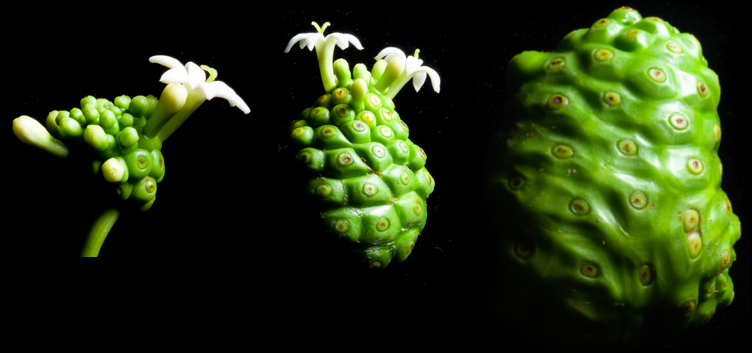
Dry Fruits
Achenes
Achene is a type of dry fruit that does not split open (indehiscent) and contains a single seed (Figure \(\PageIndex{6}\)). The small brown dots on top of strawberries are examples of achene fruits. Strawberries are a special type of fruit called an accessory fruit, which does not develop from the ovary of the flower but instead develops from the receptacle (the part that connects the flower to the stem).
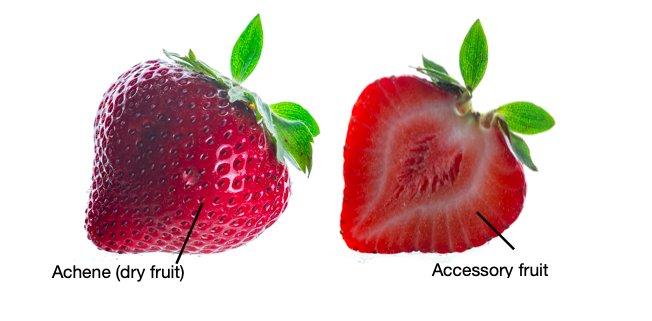
Capsules
A capsule is a dry fruit that splits open (dehiscent) in 3 or more ways. Pua kala (Hawaiian poppy; Argemone glauca) is a native Hawaiian species that produces capsule fruits. The capsules pop open when dry, releasing dozens of black seeds (Figure \(\PageIndex{7}\)).

Legumes
Legumes are fruits commonly found in the members of the Fabaceae family (legume or bean family). These dry fruits normally split open along two seams when mature (Figure \(\PageIndex{8}\)).
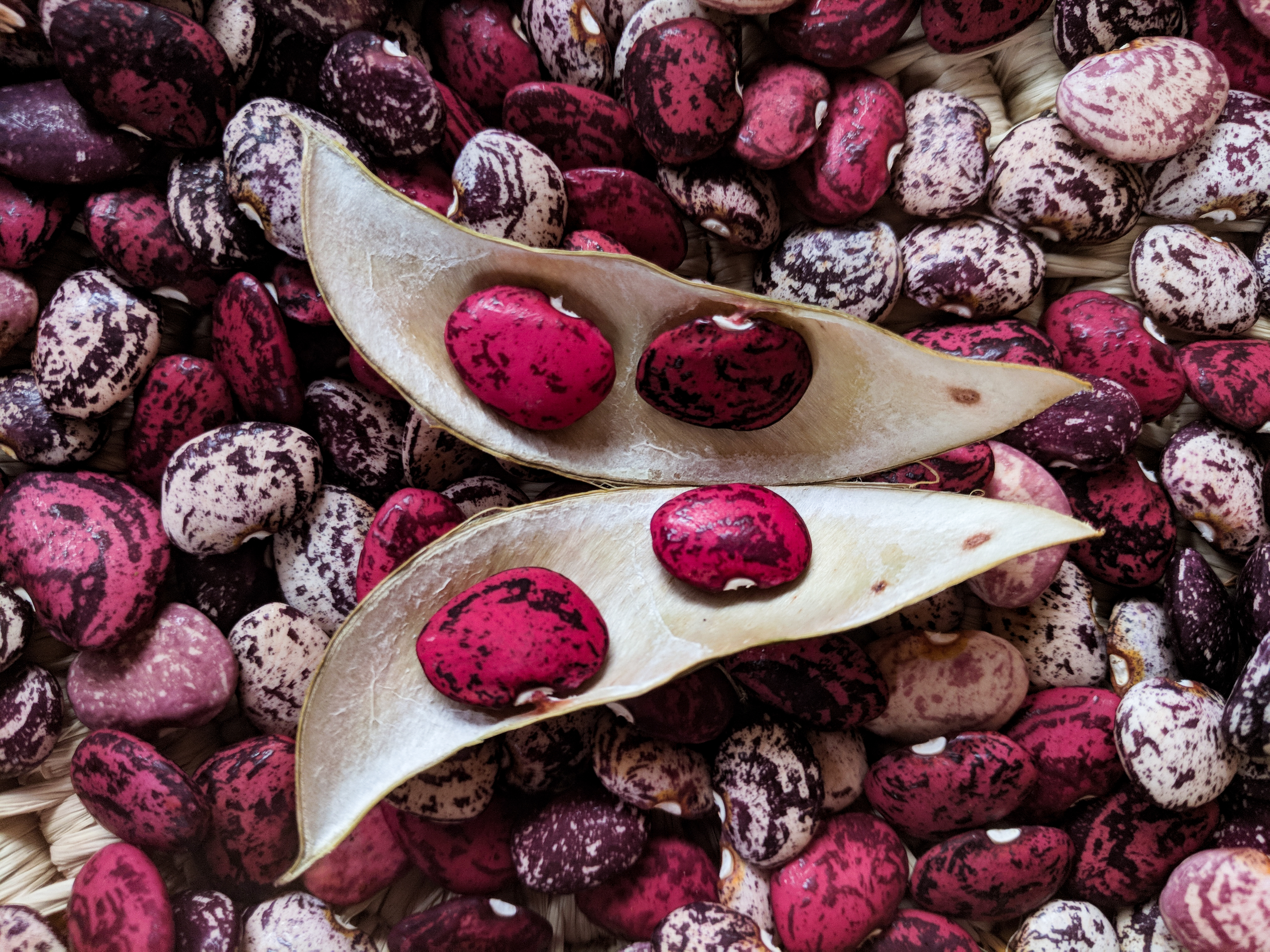
Caryopsis
The caryopsis is a dry fruit that has the seed coat fused with the ovary wall or pericarp (Figure \(\PageIndex{9}\)). You can’t distinguish between the seed and the fruit because the two are fused. Cereal grains in the family Poaceae such as rice, barley, and corn have this type of fruit.
